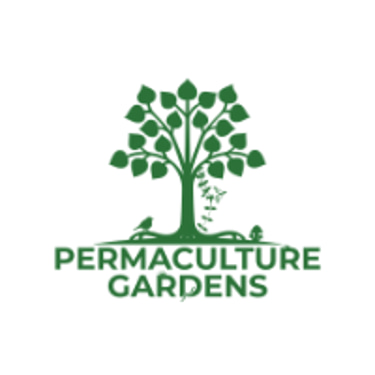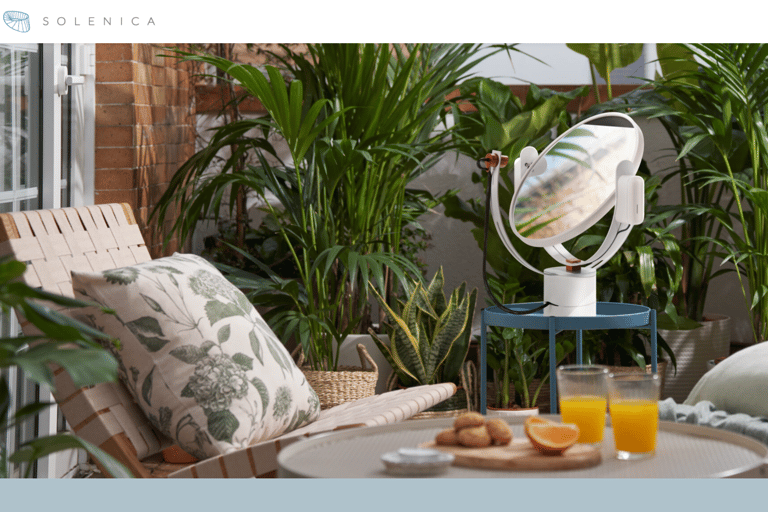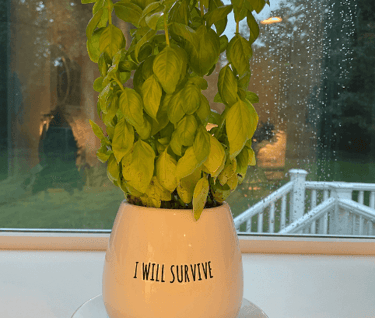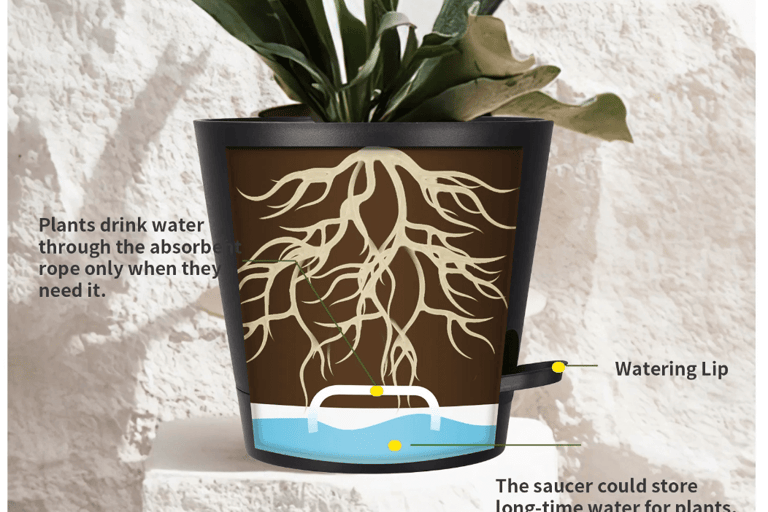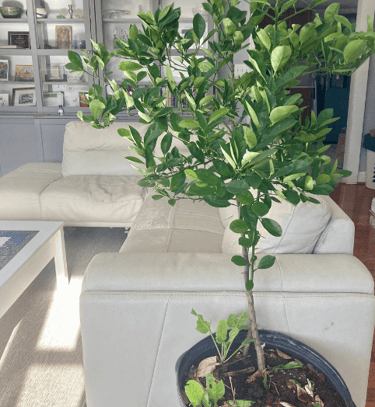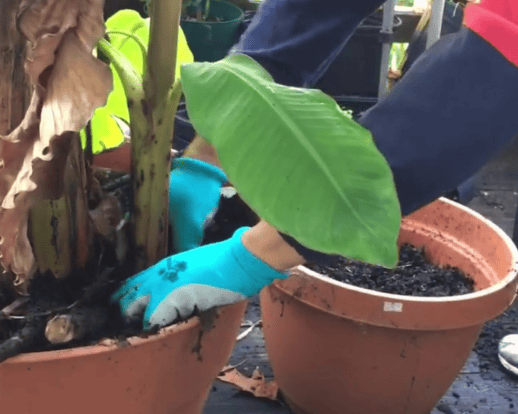Indoor Gardening for Beginners
Indoor gardening is often the first foray of any would-be grower into the world of plants. Here we break down what that entails and why it's important.
12/5/202311 min read
Indoor Gardening for Beginners:
How to Grow Your Houseplants and More
Disclaimer
This Indoor Gardening article may contain some affiliate links. The small commission we receive if you choose to purchase goes towards making this gardening education available for free! We do not affiliate for anything we do not personally use. Thanks so much for your support!
Indoor Gardening for Beginners Video

Indoor Gardening for Beginners
How to Grow Your Houseplants and More
Indoor gardening has always been an intriguing topic for us permaculture gardeners.
Every time we did our plant sales or shows in the suburbs of Washington DC, we noticed that many people stopping by our booth would claim that they didn't have any space to grow any plants. They were either living in a condo or apartment with or without a small balcony or patio.
We found this simply wasn't true. There's a tiny plant just waiting to be planted by you.
In this article, we explore:
1. Indoor Gardening Essentials
Indoor plants are a great way to purify the air in your home.

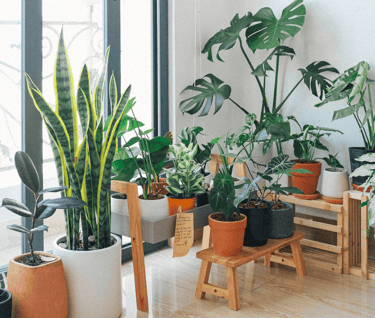
Indoor Space
The average American home today is 1800 square feet, larger than at any point in the country's history. We also spend almost 87% of our time indoors. Research suggests that our "indoor environments may be as much as ten times more polluted than the outdoor environments." (Wolverton, How to Grow Fresh Air)
So how is all of this indoor time affecting our health?
In the early 1970s, when NASA was starting to design SkyLab, its first space station, they discovered that the materials used in the construction of the space station produced gases that contained harmful organic chemicals. What was worse was that the concentration of these organic compounds inside enclosed areas was many times higher than what one would find in a natural outdoor environment. They labeled these out-gassed chemicals VOCs or volatile organic compounds.
Following up on this study, environmental scientist, B.C. “Bill” Wolverton, discovered that some plants absorb these gases and reduce the concentration of VOCs in the indoor environment. He went on to publish a list of easily grown indoor plants that were most effective in absorbing VOCs.
If you have at least as much space as the astronauts do, you can and should grow these air-purifying plants.

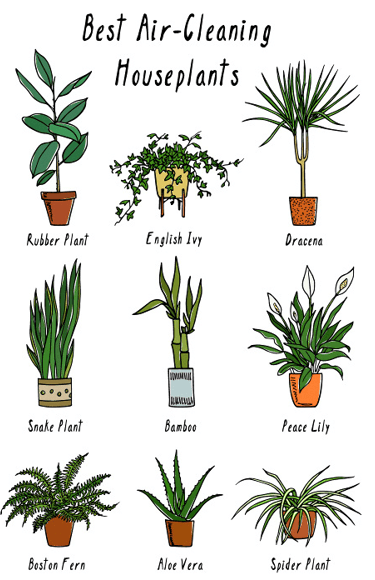
Best Air-Cleaning Houseplants courtesy of Ocala Gazette
Best Indoor Houseplants (according to NASA study)
Variegated snake plant/mother-in-law's tongue (Sansevieria trifasciata laurentii)
English ivy (Hedera helix)
Peace lily (Spathiphyllum 'Mauna Loa')
Chinese evergreen (Aglaonema modestum)
Bamboo palm (Chamaedorea seifrizii)
Red-edged dracaena, marginata (Dracaena marginata)
Cornstalk dracaena, mass cane/corn cane (Dracaena fragrans 'Massangeana')
Weeping fig (Ficus benjamina)[5]
Barberton daisy, gerbera daisy (Gerbera jamesonii)
Florist's chrysanthemum, pot mum (Chrysanthemum morifolium)
Janet Craig (Dracaena deremensis "Janet Craig")
Warneckei (Dracaena deremensis "Warneckei")
So if growing plants indoors can be good for our health, how can we ensure they survive indoors?
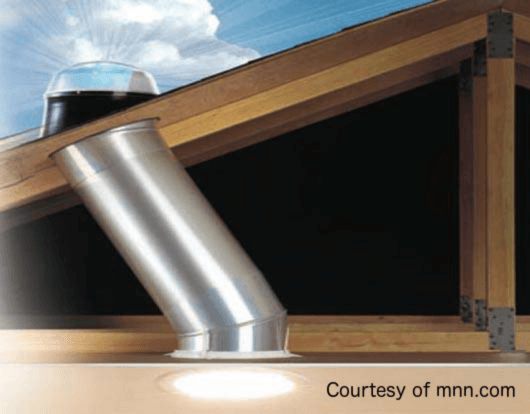

Sunlight
Artificial indoor lighting doesn't quite provide the correct frequencies of light that plants are tuned to absorb.
For most North American homes it's preferable to have south or west-facing windows for growing since they will gather the most sunlight as the sun tracks across the sky.
There are some handy phone apps (Sun Surveyor and SunCalc) that you can use to determine how many hours of sunlight you get for specific windows.
If you don't have a good window situation, there are several ways to introduce more light into your home. The most convenient and simplest method is to install a "grow light."
Solar Tube
Growlights, Solar Tubes & Parabolic Mirrors
Growlights usually come as either fluorescent or LED arrays, providing enough energy to easily start seedlings and grow leafy crops like lettuce, parsley, and basil.
Fluorescent bulbs tend to use more energy than LED lights and don't provide as wide a range of light frequencies. However, they are much cheaper in the short term.
Although LED lights cost more initially to purchase (around $40 for an LED bulb, plus $40 for an enclosure), they will produce healthier seedlings and plants in the long run and save energy costs.
The general rule for growlights is "You get what you pay for." A mid-range grow light that we recommend is called Mars Hydro
Although it's expensive to retrofit into houses, solar tubes are an effective way to pipe sunlight from your roof into interior rooms!
Some of these systems use fiber optics cables to transport the sunlight over 50 feet into your home.
A crowdfunded project called Caia renamed "Alina," a sun-tracking parabolic mirror that reflects light from outside into ambient light for outside-facing rooms.
Sunlight is one of the main issues to troubleshoot when growing indoors because many homes don't allow for enough sunlight.
"Alina," a parabolic mirror to bring sunlight indoors
Courtesy of Solenica.com
Potted basil plant courtesy of Lori Davis
Most modern houses in America use forced air pumped through vents to heat and cool the environment.
In several European countries, like Germany, one simply must learn to open and shut windows and contend with the cold (or heat).
Unfortunately, for Americans, forced air increases evaporation and desert-like conditions for our houseplants.
Self-watering planter image from Walmart.com
Water
Because pots and soils are constantly drying out, the need for constant watering gets burdensome and can lead to instant plant death on those days that we forget to water or if we go out of town.
Mulching potted soil with coffee grounds, coconut coir, sawdust, or even pencil shavings can help delay the rate of evaporation. Inevitably, we search for an automated watering system.
The easiest solution to provide automatic watering is to purchase (or construct) a self-watering planter.
In a self-watering design, a reservoir of water is located underneath the actual pot, separate from the soil, and uses wicking capillary action to suck up water into the pot. Because this action is passive it doesn't suck up too much moisture and is self-regulating.
If you need a DIY solution to monitoring your indoor plants, check out this
Fritzing Electronics Made Easy project.
Just as water is crucial for your plants so is the right kind of soil. Many gardening experts will advocate creating non-soil blends using perlite, vermiculite, coconut coir, peat moss, or biochar.
Most of these recipes are recommended on the basis that regular soils become either dried out or too moist indoors.
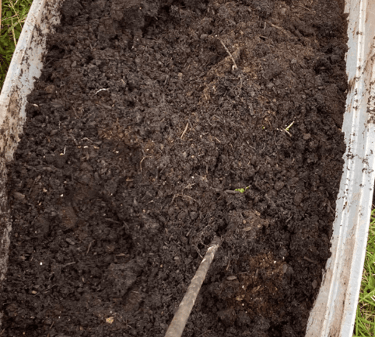

Unfortunately, most of these alternatives to soil are not sustainable and quite often cost a lot more than their benefit to your indoor plants.
Permaculture design works with nature to promote healthy gardening and this works well in outdoor situations. Soils teeming with life and supporting a diverse and healthy ecology. The problem indoors is that we don't really want to support the same kind of ecology. We don't potted soil to be teeming so much with life that we also have fruit flies and gnats.
Supporting large numbers of insects in your indoor pots usually leads to them exploring elsewhere in your house for more resources.
Homegrown soil
Home comfort and healthy soils
So how do we solve this dilemma of having soil that is teeming with life (including flies) and having a comfortable, healthy home?
The ideal balance of "ecology vs utility" is open to further study. As permaculture gardeners, we probably have a higher tolerance for insects than most of our readers, but here are a few tips for gaining the ideal "soil inside the home" balance.
Larger pots are almost always better than small pots because the amount of soil supports a healthier ecosystem. Ideal pots would be long skinny self-watering planters.
One of the few animals that "behave" themselves indoors is the humble worm. Whenever you first fill your pot with soil, add a small amount of kitchen waste in the bottom with a healthy handful or two of earthworms. They'll survive pretty easily and help to regulate both the moisture and bacterial population in your soils. Make sure the kitchen scraps are below ground, not above ground to attract flies.
Using aged or "finished" compost is perfectly fine for indoor gardening soil uses, and is much cheaper than buying alternative options. Compost that has undergone a thermophilic process would have killed all flies in the process.
The beginning of this article dealt with VOC-absorbing plants. However, don't feel limited to just growing these plants in your indoor gardening spaces. There are plenty of choices that will do better indoors in a strictly regulated environment than outdoors in some chaotic temperate zones.
Below are some suggestions for cultivating a modest harvest indoors.
Soil
Potted gardenia
Indoor Fruit Trees
Many tropical plants are easy to take care of in containers and are self-fertile so they can produce fruit or berries indoors.
It's usually a good idea to put them outside on a patio or deck in the summer to boost your harvest, but many of them can survive the whole year inside your house. Some possibilities include:
2. Indoor Gardening Houseplant
Choices


These varieties grow fast, up to a maximum of 6-7 feet. They have nice foliage that can be used to wrap and flavor foods and can even produce 1 or 2 bunches of bananas a year if they get good sun.
Dwarf Bananas
Citrus
Dwarf lemons, kumquats, and limes are easy to grow indoors and can produce fruit year-round. Keeping soils moist but not wet will make sure their roots don't rot, but aside from that, these plants are perfectly happy in containers.
Fig
Fig trees are easy to grow inside because they prefer slightly drier soils. Try varieties that are suited for container culture like "petite Negri." They'll be easier to prune and won't become as root-bound as other varieties.
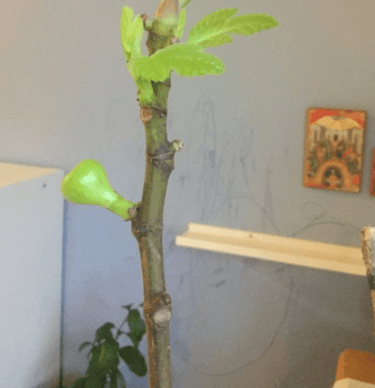

Indoor calamansi (Philippine lemon)
Baby banana "trees" by the window
Fig fruiting indoors in the winter
Indoor Vegetables
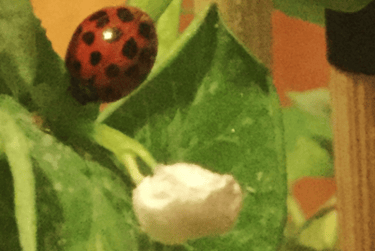

Look for short-growing varieties of peas (that are not climbing) such as "Tom Thumb," "Little Marvel" and "Blue Bantam Dwarf."
This potted pea attracts a lady beetle.
Peas
Tomatoes & Peppers
Cherry tomatoes and small peppers can be grown in pots and can yield a few fruits throughout the year but especially in the summer through fall.


Leafy Greens
Leafy greens such as lettuce, spinach, and Brassica greens (kale, radish, mustards) are great for indoor growing. They just need adequate light. This is a lush spinach grown by one of our GIY Program members in Minnesota.
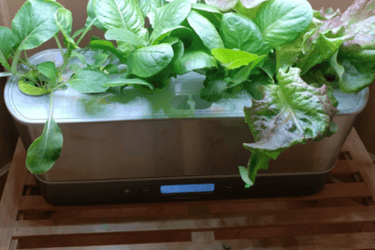



Tiny Cucumbers
"Beit alpha" is the name of this tiny but productive cucumber grown in a pot year-round. These fruits only came once a year, for us but when they did, we enjoyed them like candy.
Ladybug on indoor flowering pea
Image courtesy of Taunisha McShan
Tiny beit alpha cucumbers
Cherry tomatoes

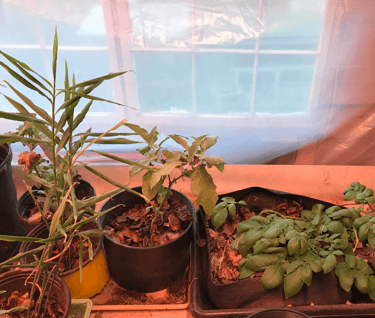
Faye Streiff who grows in the Appalachian mountains of the Northeast US grows ginger and spinach by a sunny window
While most popular indoor plants are ornamental, why not grow their edible counterparts that produce similar foliage but with the food benefits? Ginger and turmeric as examples of these.
"I dug up, pruned back, and potted out a tomato and a pepper plant, both blooming in 18F weather in December."
Faye Streiff (on permies.com)
Ginger & Turmeric
Other Indoor Edibles

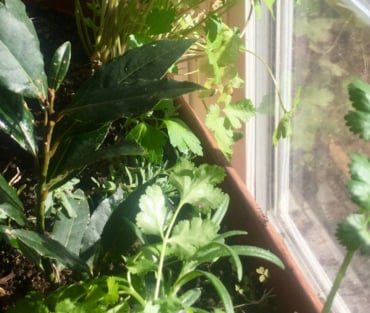
Many culinary herbs (rosemary, marjoram, basil, oregano, lavender, thyme) have Mediterranean origins, where the climate is naturally drier. This makes growing many culinary herbs indoors a snap. You can sprinkle these seeds on the surface of an herb pot to get started. Just make sure to keep basil, parsley, or coriander separate from your other herbs since they grow much faster (being annuals).
Herbs
Mushrooms
Growing mushrooms indoors is an ideal choice for anyone wanting to grow food in a small (even dark) indoor space.
Most mushroom varieties prefer little to no direct sun. Some varieties are very easy to cultivate indoors; instead of growing in pots, they grow on a substrate, which is a fancy word to describe a block of material the mushroom grows on. Different mushrooms prefer different substrates, and as they colonize and eat through the food in the substrate, they eventually produce pin-sized heads that swell into large edible bodies.
An easy place to start is by purchasing an indoor mushroom kit (available from Mushroom Mountain and Field And Forest), which already comes with the substrate inoculated with the mushroom of choice. Only a few weeks after receiving your kit in the mail, you can harvest 2-4 pounds of shiitake, oyster, or crimini/portabella mushrooms. After your kit is "spent", you can put it in your compost or garden bed and easily add to the fertility of your garden.
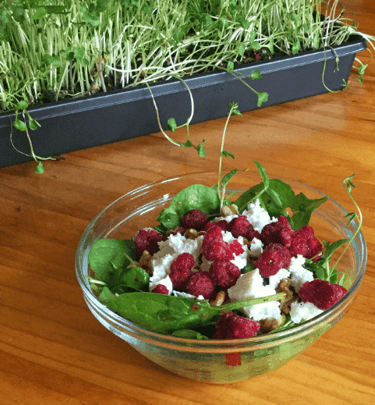

Microgreens
A 1020 seed tray can produce about half a pound of microgreens in a week, more than enough to sprinkle in sandwiches and stews, or just to snack on raw.
When you are done with your tray, you can dump the roots into your compost or garden, and immediately start again with a thin layer of soil. Rotating in sprout trays each week can easily produce 20 to 25 lbs of sprouts a year.
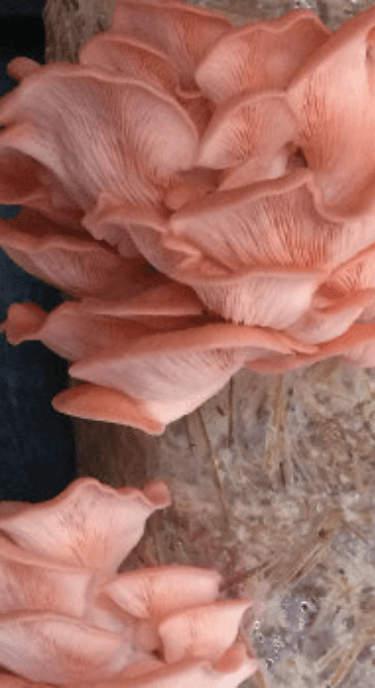

Bay leaf and cilantro by a sunny window
Microgreens garnish a salad
Pink oyster mushrooms
Transplant a banana "tree" to bring indoors.
One year, this served as our Christmas tree.
How to Transplant Indoor Plants
3. Dig Deeper
Here is a video showing how to transplant indoor plants. Ideally, the pot one should use would be bigger than the one I have below. This was for transportation purposes only and we've since then moved this bromeliad to a larger home.
PLEASE NOTE: Roots are very fragile at this stage, so take your time to very gradually loosen the roots so they don't break off. Keep as much of the original soil around the root with the plant as you transfer it to the new pot.

Transplanting indoor plants
What are you waiting for? Grow something today!
If you are new to growing, begin by growing something indoors.
If it's too hot or cold outside, indoor gardening is the way to grow!
We hope this article has made it a whole lot easier for you to get started with indoor growing.
Need some help? Try planting your pantry!
Did you know that you can grow your garden from your groceries?
You don't need a huge backyard, just your kitchen.
Come learn how to grow food in five days using your everyday kitchen staples!
Join the "Plant Your Pantry" Challenge!
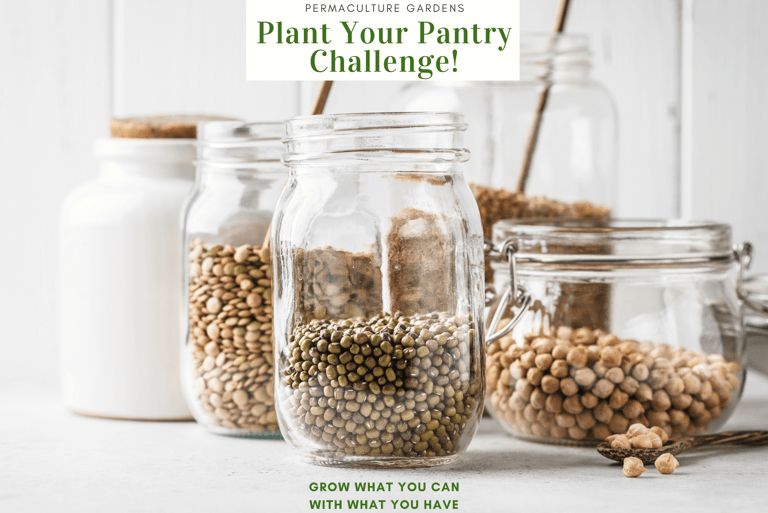

I WANT TO GROW MORE
Sign Up for a
Permaculture Garden Course
I AM A BEGINNER
I WANT MY DREAM GARDEN
Sign up for the
Grow-It-Yourself Program
Everything you need to start a garden
may be hidden in your pantry.
Take a self-paced, step-by-step garden course to help you grow right from seed to harvest.
Make Your Organic Food Garden A Reality with
a garden mentor
a community
an app &
a proven plan!

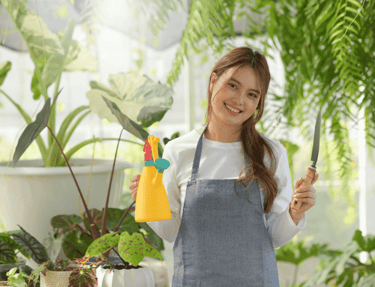

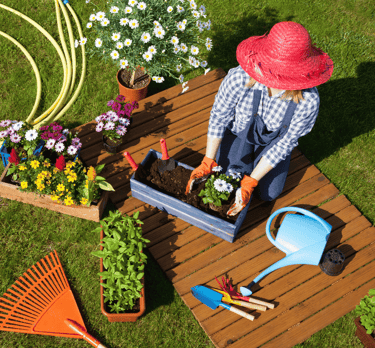
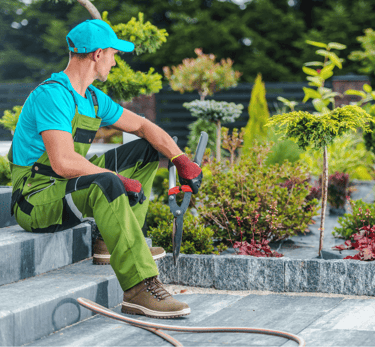

Choose one next step.
Which of the following are you?
Permaculture Gardens - your online resource for organic & sustainable gardens.
Contact
permaculturegardens@gmail.com
Bethany Farm
41558 Stumptown Rd.,
Leesburg, VA 20176
